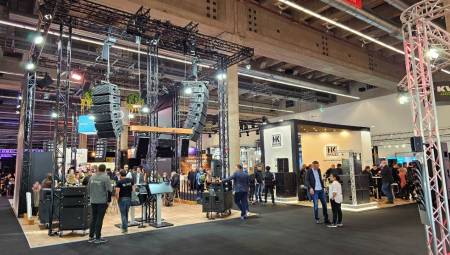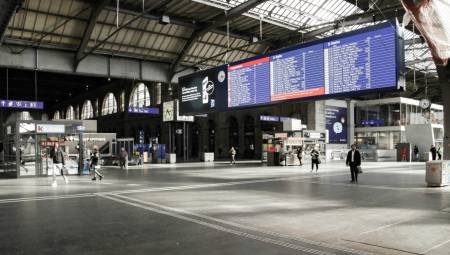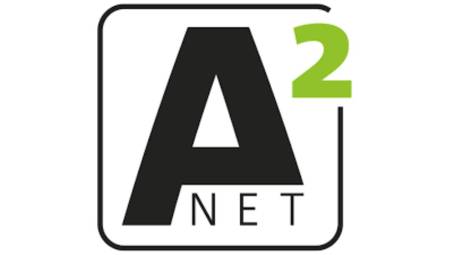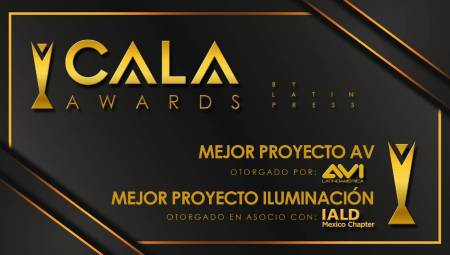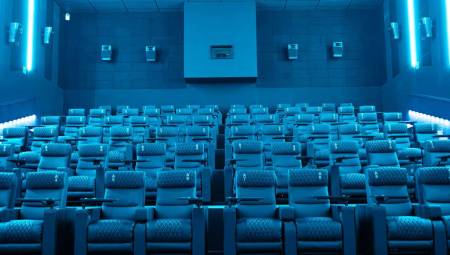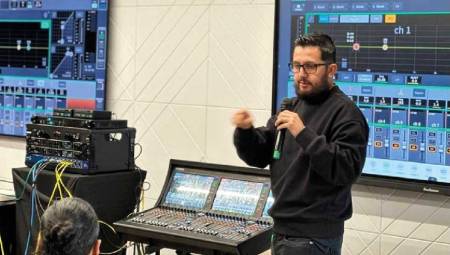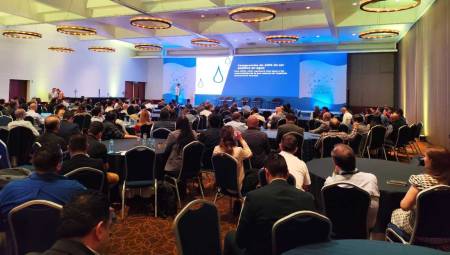Recall that in the last edition, Garth Powell delved into the issues of filtering and isolation of AC energy. This time he will talk about voltage regulation.
by Garth Powell*
So far I have written about the unique similarity of every professional electronic installation, be it live sound, radio and television broadcasting, sports venues, nightclubs or automated audiovisual systems for boardrooms: they all depend on the supply of alternating current (AC) power. In the previous two articles we discussed AC peaks and transients, the danger of multiphase power supply with neutral and intermittent AC noise problems, ground circuits and current compression.
Some of these issues are crucial for each installation, while others only become important when the application guarantees the interest in maintaining the highest levels of quality. For example, if we are supplying power to a computer system for an office or for a stage full of high-quality power amplifiers and mixing consoles, we must protect the equipment and make sure we do not lose our programming. There is a fundamental need to protect and filter dangerous fluctuations in current and noise that would affect the basic operation of our equipment.
Other power control technologies in alternating current are more application-specific. There's no doubt that a boardroom will have no problem minimizing current compression in its power amplifiers, since the audio quality for a slideshow or webinar doesn't require the highest resolution (unless it's a record label's boardroom).
However, in this aspect there is another concern common to all applications in Latin America: the regulation of AC voltage. Simply put, an AC voltage regulator adjusts the input voltage and corrects abnormally high or low voltages, feeding its vital components with a constant current of 120 VAC. While the voltage may be somewhat continuous in some areas of your city, state, or country, it is important to understand that most of the equipment you will specify was created for a constant supply of 120 VAC. Even so, the average voltage in Mexico, to cite an example, is 127 volts. Although it is within 10% of the optimal voltage of the components, this will cause the temperature of the power supplies of many commercial electronic components to rise.
Some vital components may experience significantly greater distortions (unless all circuit parameters programmed from the factory for 127 VRMS are recalibrated). And 127 volts is just the average What happens in 130 or 136 volts? Operation is affected. Some equipment will intermittently lock or overheat due to abnormal voltage increases in the AC line. In addition, abnormal voltage drops below 112 VAC raise a similar concern. The same intermittent phenomenon and greater distortions may occur. For example, some video projectors may not receive consistent power under these reduced voltage conditions.
Of course, for many people in Latin America, this is not an alarming revelation. Many electrical contractors and AV system designers have been using AC voltage regulators for years. But many of these units are bulky devices for maintaining basic appliances and incandescent lights, installed behind a backup generator. Today's electronics require much cleaner and more stable regulation technology. Grandpa's overvoltage regulator, with burnt and squirted contactors and rusty high-impedance electrical circuits, creates the same number of problems it tries to solve in today's sensitive electronic circuits.
Many low voltage regulators can generate discharges, create AC noise, significantly increase AC impedance (severely limiting amplifier performance), or simply fail to handle the current demands of your AV system without cutting the AC waveform and adding distortions that will adversely affect the image and sound quality. This is just as problematic for current microprocessing technologies, as they require a stable, clean source of AC power to avoid crashes, digital errors, and loss of information.
It should be understood that different technologies have been developed for different applications. The most practical voltage regulation technology for your home lighting isn't necessarily what your video server requires, and the system that would be ideal for large motor machines isn't the one that would best serve a rack of power amplifiers. Of the many voltage regulation technologies found on the market, the most common are:
- Ferroresonant: this is a complex capacitance and inductance circuit modulated with a transformer to create a constant voltage and substantially reduce asymmetric noise. The circuit is moderately expensive and can work well in some industrial or laboratory settings. Unfortunately it creates heat, has no tolerance for dynamic loads, such as power amplifiers, emits a very audible hum and projects a magnetic field of several meters. For these reasons, it is not an ideal regulation technology for professional audiovisual systems or for computer microprocessing circuits.
- Full regeneration amplifier/oscillator: in essence this is equivalent to a large power amplifier with a 60 Hz oscillator driving the input. It takes the AC input voltage, converts it to direct current, and then synthesizes it back into a low-distortion AC source. The advantage is exceptionally robust regulation (generally ±0.1 VAC). In addition, it reduces AC line distortion and eliminates some of the symmetrical NOISE of AC. Unfortunately, this technology is extremely inefficient and very expensive. A simple 10-amp output capacity can be worth several thousand dollars, reheat an entire enclosure and create severe current compressions or AC signal distortions when capacity is exceeded. It is ideal for ac synchronous motors, not for professional audiovisual equipment.
- Active elevation/reduction correction: This design compares the AC voltage with a controlled amplitude and distortion reference, and adds or subtracts a correction to the AC input (with a maximum correction of ±20%). Regulation can be very good (usually ±0.5 VAC). It is much more efficient than 100% complete regeneration, but can suffer from severe current limitation, as well as create AC noise and distortion of its own, partly due to the exchange of circuits that are usually used. This technology might work well for some low-current av equipment, but it can be surpassed by a multi-lead autoformer with solid-state switching for your power amplifiers.
- Motorized Variac: This design uses a lift/reduction self-former with several leads. On the surface above the autoformer are exposed cut coils that make contact with a brush, creating the appropriate AC voltage, either raising or reducing the voltage. A microprocessor constantly monitors the input voltage relative to the output voltage, and a motor moves the brush accordingly. This technology has good regulation (±1 VAC generally), but has the disadvantage that the engine emits a very audible noise when put into an audio area. This technology was created for laboratories that perform constant voltage readings.
Since the coils are covered in grease, and make contact with a brush, high current demands will create sparks and noise in the AC line. The brush should be replaced and the coils cleaned every one to two years. This makes this technology impractical for long-term use in most applications. In addition, the contactor creates a relatively high AC impedance, which severely affects the power amplifiers. While mass industrial versions of this technology have been used for decades by some itinerant A/V professionals (particularly when following a diesel generator and its erratic voltage output), today's low-noise, ultra-high resolution systems require much more from their power source.
To finish, but by no means to forget, comes my preferred AC voltage regulation technology for professional A/V, radio and television broadcasting, recording and boardrooms alike.
Solid-state zero-crossover switching autoformer with multiple leads: This circuit works very similarly to motorized variac, except that as the input-output microprocessor (comparator), it instructs the regulator circuit to raise or reduce the voltage. This is achieved by zero-crossing solid-state switches. Since multiple switches are used, there are no exposed coils, and the electrical contacts remain airtight and secure for many years to come. Regulation can be quite good (±3 VAC) with a reasonably wide catch rate (90 VAC-135 VAC). This circuit also has exceptionally good transient control characteristics with very little current compression. Unfortunately, solid-state switching can create some AC noise if not accurately calibrated, so a good design without this noise can easily cost upwards of $700. However, if the budget is available, this is an excellent candidate for today's sensitive components, even if they are subjected to the most demanding environments.
Keep in mind that installations that rely on backup generators (gas or diesel) should be followed by a voltage stabilizer if you have a system that requires a voltage corresponding to even 120 volts. This is because the output voltage specifications of generators are based on a constant current load, does it look like any A/V system you have ever installed? Of course not. The result is that the current demand suddenly rises, the generator produces too little voltage, and when the current demand drops, the generator produces too much voltage.
An AC voltage regulator is what is needed to control this. In addition, when you combine a suitable AC regulator with other energy control technologies, such as non-sacrificial surge suppression and linear noise filtering in AC, your system will remain stable and secure, and your customer will be well served.
*Garth Powell is a principal product designer and chief sales engineer at Furman, a global leader in the supply of electrical control solutions. You can contact: [email protected].



